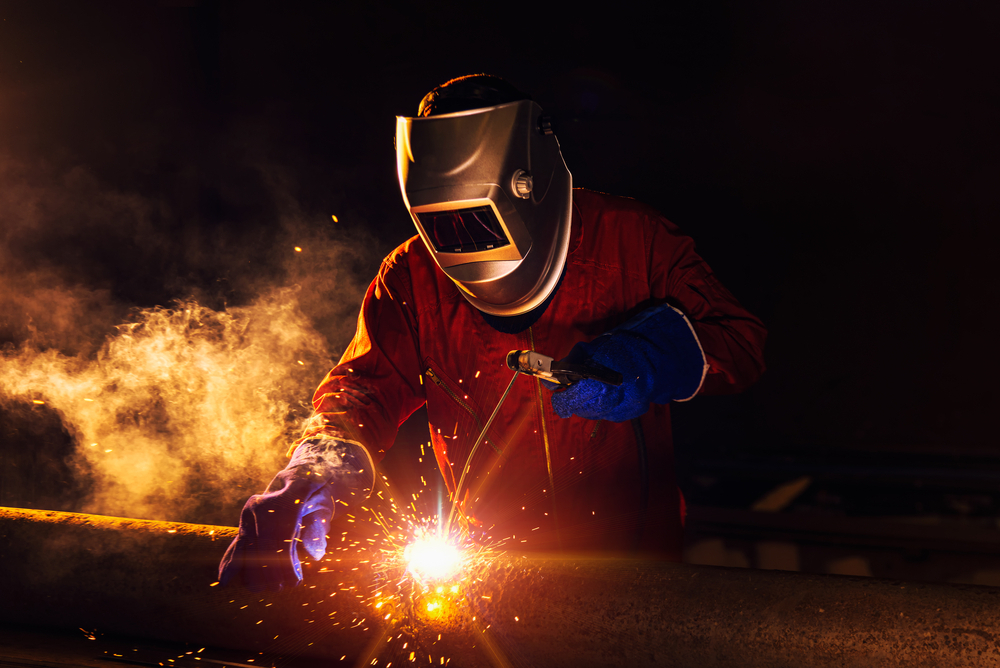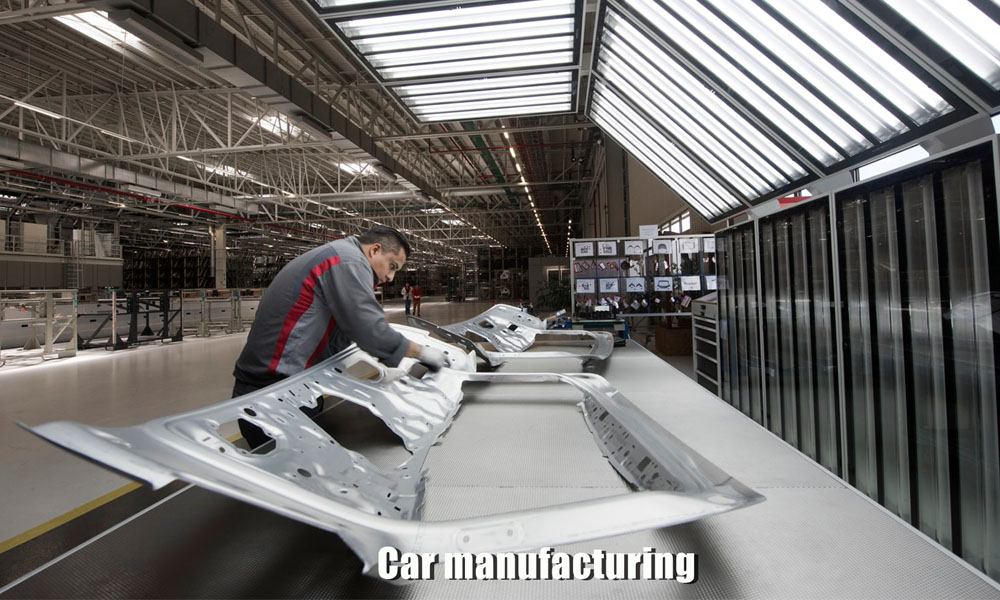Usual Welding Repair Issues and Exactly How to Address Them Efficiently
Welding repair services commonly encounter a variety of concerns that can jeopardize the honesty of the final item. Common problems consist of insufficient penetration, porosity, and misalignment, to name a few. Each flaw offers unique difficulties that need particular techniques for resolution. Comprehending these concerns is necessary for welders intending to improve their skills and end results. This discussion will certainly check out these common welding repair work concerns and efficient approaches to resolve them.
Insufficient Penetration
Insufficient penetration occurs when the weld metal stops working to fully fuse with the base product, causing weak joints and prospective architectural failings. This issue commonly originates from inadequate warmth input, incorrect electrode angle, or inappropriate welding rate. Welders might encounter poor infiltration because of a mistake of the needed specifications for a certain material thickness or kind. Furthermore, contamination on the base material's surface can prevent effective bonding, intensifying the trouble. To deal with inadequate infiltration, welders need to guarantee suitable setups on their devices and preserve a tidy work surface area. Routine evaluation of welds is suggested to identify any type of deficiencies early, enabling timely corrections and the avoidance of endangered structural stability in bonded assemblies.
Porosity
Porosity is a common flaw in bonded joints that manifests as tiny gas bubbles entraped within the weld steel. This problem can compromise the integrity of the weld, resulting in decreased strength and potential failure under anxiety. Montana Mobile Welding and Repair. Porosity generally emerges from contamination, moisture, or improper welding techniques, which enable gases to escape right into the liquified weld pool. To deal with porosity, welders must assure proper surface area preparation, preserve a tidy working environment, and use ideal welding criteria. Additionally, picking the appropriate filler product and protecting gas can minimize gas entrapment. Regular assessment and screening of welds can help identify porosity early, assuring prompt corrective actions are taken, therefore preserving the top quality and integrity of the welded structure
Imbalance
Misalignment in welding can arise from different factors, consisting of incorrect arrangement and thermal development. Understanding the origin is vital for effective resolution. Several modification techniques are readily available to straighten parts and assure structural integrity.
Root causes of Imbalance
Welding misalignment commonly stems from a selection of underlying concerns that can jeopardize architectural honesty. One main reason is inappropriate fit-up of components prior to welding, which can result in voids and irregular surfaces. Variants in thermal expansion throughout the welding process can additionally cause distortion, particularly if the products being joined have different coefficients of growth. Additionally, poor securing and fixturing might fail to hold elements firmly in position, causing activity throughout welding. Poorly kept equipment, including welding equipments and devices, may introduce variances in the weld grain, additional adding to misalignment. Driver error, stemming from inadequate training or experience, can likewise play a significant function in developing misaligned welds.

Modification Methods Available
Addressing imbalance properly calls for a combination of restorative strategies customized to the specific problems handy. One usual technique is using jigs or fixtures to hold parts in the correct placement during welding, guaranteeing regular placement. Furthermore, preheating the products can help lower distortion and enhance fit-up. For considerable misalignment, mechanical realignment methods, such as using hydraulic jacks or clamps, can be utilized to correct the setting before welding. Post-weld warm treatment might likewise be needed to eliminate stress and anxieties brought on by misalignment. Lastly, cautious assessment and change throughout the arrangement phase can stop misalignment concerns from ending up being substantial problems, advertising a smoother welding process and improving general architectural stability.
Distortion
Distortion is an usual obstacle in welding that can emerge from numerous variables, including unequal cooling and heating. Understanding the causes of distortion is necessary for executing efficient prevention techniques. Addressing this problem not just enhances structural integrity however likewise enhances the total high quality of the weld.
Reasons for Distortion
When subjected to the intense warm of welding, materials often undergo changes that can result in distortion. This sensation mostly develops from thermal development and contraction throughout the welding procedure. As the weld location warms up, the material broadens; upon cooling, it contracts, which can create inner anxieties. In enhancement, irregular heating across a workpiece can intensify these stresses, causing bending or bending. The type of product also plays a considerable function; metals with varying thermal conductivity and coefficients of development may respond in different ways, resulting in uncertain distortions. Bad joint style and visit this page poor fixturing can add to misalignment during welding, increasing the chance of distortion. Recognizing these causes is crucial for reliable welding repair and prevention methods.
Avoidance Techniques
Efficient avoidance techniques for distortion during welding focus on managing heat input and making sure correct joint design. Maintaining a consistent heat input helps to lessen thermal development and contraction, which can result in distortion. Using strategies such as preheating the workpiece can also lower the temperature level slope, promoting uniform home heating. Additionally, picking suitable joint styles, such as T-joints or lap joints, can improve stability and reduce anxiety focus. Executing appropriate fixturing to safeguard the work surfaces in position better help in preserving alignment during the welding procedure. Staggered welding sequences can disperse heat more evenly, protecting against local distortion. By applying these approaches, welders can greatly reduce the likelihood of distortion and improve the overall high quality of their welds.
Cracking
Cracking is an usual issue run into in welding repair services, frequently resulting from numerous elements such as inappropriate cooling rates, product option, or poor joint prep work. The incident of fractures can substantially compromise the integrity of the weld, bring about prospective failures throughout procedure. To address this issue, welders have to first assess the origin triggers, making sure that materials are compatible and appropriately chosen for the certain application. Furthermore, regulating the air conditioning rate throughout the welding process is vital; fast cooling can induce stress and anxiety and result in cracking. Proper joint style and preparation likewise add to reducing the risk. Implementing these approaches can improve weld quality and durability, inevitably reducing the probability of breaking in completed weldments.

Incomplete Combination
A considerable concern in welding repairs is incomplete combination, which takes place when the weld metal does not effectively bond with the base product or previous weld passes - Montana Mobile Welding and Repair Fabrication. This issue can cause weak points in the joint, possibly compromising the integrity of the bonded structure. Elements adding to insufficient combination consist of inadequate warmth input, incorrect welding method, and contamination of the surface areas being signed up with. To resolve this concern effectively, welders must ensure proper pre-weld cleansing and surface area preparation, in addition to change their welding specifications to achieve ample penetration and combination. Normal evaluation during the welding process can likewise aid identify incomplete combination early, permitting prompt corrective measures to enhance the overall quality of the weld
Overheating
While welding repair work can enhance structural stability, overheating presents a considerable obstacle that can result in material degradation. Excessive warm during welding can change the mechanical buildings of steels, resulting read the full info here in lowered strength, boosted brittleness, and bending. This sensation is specifically essential in high-stress applications where architectural reliability is paramount. Identifying getting too hot can entail visual examinations for staining or distortion, in addition to keeping track of temperature throughout the welding process. To reduce the dangers connected with getting too hot, welders need to use ideal techniques, such as controlling warmth input, readjusting traveling speed, and utilizing appropriate filler materials. In addition, carrying out pre- and post-weld heat treatments can help recover material residential properties and improve the overall top quality of the fixing, making sure long-lasting performance and safety.
Regularly Asked Inquiries
What Are the Common Indicators of a Welding Issue?

Just How Can I Evaluate My Welds for Quality?
To check welds for high quality, one can use aesthetic evaluations, ultrasonic testing, and radiographic methods. Each strategy guarantees architectural honesty, determines flaws, and verifies adherence to defined standards, eventually boosting the dependability of the bonded joints.
What Safety Preventative Measures Should I Take While Welding?
When welding, one must focus on security by using argon near me proper personal protective equipment, guaranteeing appropriate air flow, safeguarding combustible materials away, keeping a tidy work space, and knowing surroundings to stop accidents and injuries.
Can I Repair a Weld Without Renovating the Entire Joint?
Repairing a weld without renovating the entire joint is feasible, relying on the damage (Montana Mobile Welding and Repair Belgrade Welding). Techniques such as grinding, adding filler material, or using a welding procedure can successfully deal with certain imperfections while maintaining the bordering structure
What Devices Are Vital for Efficient Welding Services?
Important tools for effective welding repair services include a welding device, wire brush, mill, protective gear, clamps, and filler materials. Each device plays an essential function in guaranteeing quality and safety and security during the fixing process. Porosity generally occurs from contamination, moisture, or improper welding techniques, which enable gases to escape into the molten weld pool. Badly conserved equipment, consisting of welding devices and devices, may present disparities in the weld grain, additional contributing to misalignment. When subjected to the intense warm of welding, materials commonly undertake changes that can lead to distortion. Breaking is a common problem encountered in welding repairs, frequently resulting from numerous variables such as improper cooling prices, product choice, or inadequate joint prep work. A considerable concern in welding repair services is insufficient combination, which occurs when the weld metal does not appropriately bond with the base product or previous weld passes.